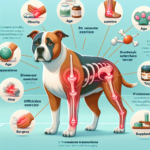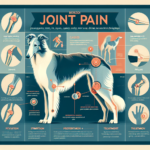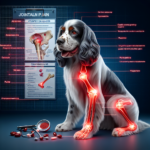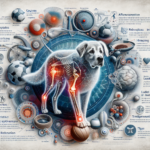Dogo Argentino Joint Pain: Causes, Symptoms, Prevention, and Treatment
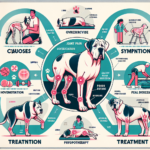
Introduction
The Dogo Argentino, a powerful and athletic breed, was originally developed in Argentina for big-game hunting. Known for their strength, courage, and loyalty, these dogs have a muscular build and a short, white coat. They are highly intelligent and versatile, often excelling in various roles such as search and rescue, police work, and as loyal family companions.
Like many large breeds, the Dogo Argentino is prone to certain health issues, with joint pain being a significant concern. Joint health is crucial for maintaining the breed’s mobility and overall quality of life. Understanding the causes, symptoms, prevention, and treatment of joint pain in Dogo Argentinos can help owners ensure their pets lead healthy, active lives.
Breed-Specific Joint Pain Risks
Genetic Predisposition
The Dogo Argentino is genetically predisposed to several joint-related issues, including hip dysplasia, elbow dysplasia, and arthritis. Hip dysplasia occurs when the hip joint does not fit together perfectly, leading to wear and tear. Elbow dysplasia involves abnormal development of the elbow joint, causing pain and lameness. Arthritis, a common condition in older dogs, results from the inflammation of joints due to cartilage deterioration.
Age-Related Risks
As Dogo Argentinos age, the risk of joint pain increases. Typically, signs of joint issues may start appearing around middle age, which for this breed is around 5-7 years. However, some dogs may show symptoms earlier, especially if they have a genetic predisposition or have experienced joint injuries.
Activity Level and Joint Stress
Dogo Argentinos are highly active and energetic dogs, often used in demanding roles such as hunting and working. Their high activity level can put significant stress on their joints, especially if they engage in high-impact activities like jumping or running on hard surfaces. This constant stress can exacerbate existing joint issues or lead to new ones.
Common Symptoms of Joint Pain in Dogo Argentinos
General Symptoms
- Limping or favoring one leg
- Stiffness, especially after rest
- Reluctance to move, jump, or climb stairs
- Decreased activity or playfulness
- Swelling around the joints
- Whining or showing signs of discomfort when touched
Breed-Specific Symptoms
In Dogo Argentinos, joint pain may manifest more prominently due to their muscular build and high activity levels. Owners might notice a significant decrease in their dog’s willingness to engage in physical activities they once enjoyed. Additionally, the breed’s stoic nature may mean they do not show obvious signs of pain until the condition is more advanced.
When to Consult a Vet
If you observe any of the above symptoms in your Dogo Argentino, it is crucial to consult a veterinarian promptly. Early diagnosis and intervention can prevent further deterioration and improve your dog’s quality of life. Regular veterinary check-ups are also essential for monitoring joint health, especially as your dog ages.
Preventive Measures for Joint Health
Exercise Recommendations
Maintaining an appropriate exercise routine is vital for the joint health of Dogo Argentinos. Low-impact activities such as swimming and walking on soft surfaces can help keep their joints healthy without causing excessive stress. Avoid high-impact exercises like jumping or running on hard surfaces, which can exacerbate joint issues.
Dietary Suggestions
A balanced diet rich in essential nutrients can support joint health. Consider incorporating foods or supplements that contain glucosamine, chondroitin, and omega-3 fatty acids, which are known to promote joint health and reduce inflammation. Consult your veterinarian for specific dietary recommendations tailored to your dog’s needs.
Weight Management
Maintaining a healthy weight is crucial for reducing joint stress in Dogo Argentinos. Excess weight can put additional pressure on the joints, exacerbating pain and discomfort. Ensure your dog receives a balanced diet and regular exercise to keep their weight within a healthy range. Your veterinarian can provide guidance on the ideal weight for your dog based on their age, size, and activity level.
Early Screening and Monitoring
Early screening for joint issues can help catch problems before they become severe. Regular veterinary check-ups, including X-rays and physical examinations, can identify early signs of joint problems. Genetic testing can also help determine if your dog is predisposed to certain joint conditions, allowing for proactive management.
Treatment Options for Joint Pain
Non-Surgical Treatments
Non-surgical treatments for joint pain in Dogo Argentinos include medications, physical therapy, and lifestyle adjustments. Anti-inflammatory medications and pain relievers can help manage pain and reduce inflammation. Physical therapy, including exercises and massage, can improve joint mobility and strength. Lifestyle adjustments, such as providing a comfortable bed and avoiding high-impact activities, can also alleviate joint pain.
Surgical Options
In severe cases, surgical intervention may be necessary to address joint pain. Common surgical options include hip replacement, arthroscopy, and joint fusion. Hip replacement involves replacing the damaged hip joint with an artificial one, while arthroscopy is a minimally invasive procedure to remove damaged tissue. Joint fusion involves fusing the bones in a joint to reduce pain and improve stability. Consult your veterinarian to determine the best surgical option for your dog.
Alternative Therapies
Alternative therapies such as acupuncture, hydrotherapy, and massage can provide additional relief for joint pain. Acupuncture involves inserting thin needles into specific points on the body to reduce pain and inflammation. Hydrotherapy, or water therapy, allows dogs to exercise without putting stress on their joints. Massage can improve circulation and reduce muscle tension, providing relief from joint pain.
Lifestyle and Management Tips
Daily Care Routine
A consistent daily care routine can help manage and alleviate joint pain in Dogo Argentinos. This routine might include gentle exercises, a balanced diet with joint-supporting supplements, and regular veterinary check-ups. Providing a comfortable sleeping area and avoiding high-impact activities can also contribute to joint health.
Modifying the Home Environment
Making adjustments to your home environment can make it more comfortable for a dog suffering from joint pain. Consider using ramps instead of stairs, providing orthopedic beds, and placing non-slip mats on slippery surfaces. These modifications can help reduce joint stress and prevent further injury.
Long-Term Management
Long-term management of joint pain involves a combination of regular veterinary care, appropriate exercise, a balanced diet, and a supportive home environment. Consistent monitoring and early intervention can help keep your Dogo Argentino active and happy despite joint pain. Work closely with your veterinarian to develop a comprehensive management plan tailored to your dog’s needs.
FAQs About Dogo Argentinos and Joint Pain
What are the early signs of joint pain in Dogo Argentinos?
Early signs of joint pain include limping, stiffness, reluctance to move, and decreased activity. If you notice any of these symptoms, consult your veterinarian for a thorough examination.
Can joint pain in Dogo Argentinos be prevented?
While genetic predisposition cannot be changed, preventive measures such as maintaining a healthy weight, providing appropriate exercise, and regular veterinary check-ups can help reduce the risk of joint pain.
Are there specific diets that can help with joint health?
Yes, diets rich in glucosamine, chondroitin, and omega-3 fatty acids can support joint health. Consult your veterinarian for specific dietary recommendations tailored to your dog’s needs.
When should I consider surgery for my dog’s joint pain?
Surgery may be considered if non-surgical treatments are ineffective and your dog is experiencing severe pain or mobility issues. Consult your veterinarian to determine the best course of action.
What alternative therapies are available for joint pain?
Alternative therapies such as acupuncture, hydrotherapy, and massage can provide additional relief for joint pain. These therapies can be used in conjunction with traditional treatments to improve your dog’s quality of life.
Conclusion
Joint pain is a significant concern for Dogo Argentinos, but with proper understanding and management, owners can help their dogs lead healthy, active lives. By recognizing the causes and symptoms of joint pain, taking preventive measures, and exploring various treatment options, you can ensure your Dogo Argentino remains comfortable and happy. Regular veterinary check-ups and a proactive approach to joint health are essential for maintaining your dog’s well-being.

